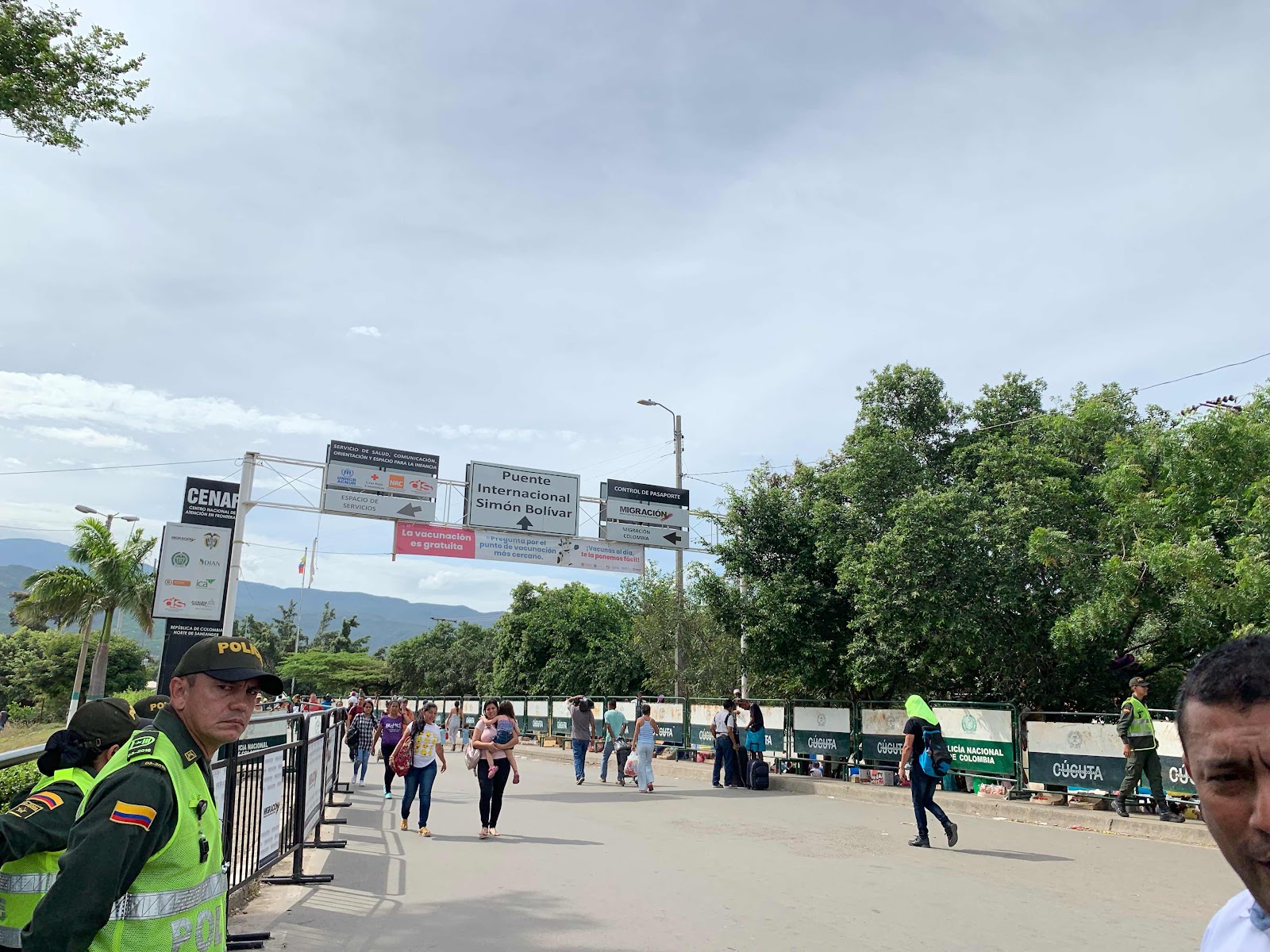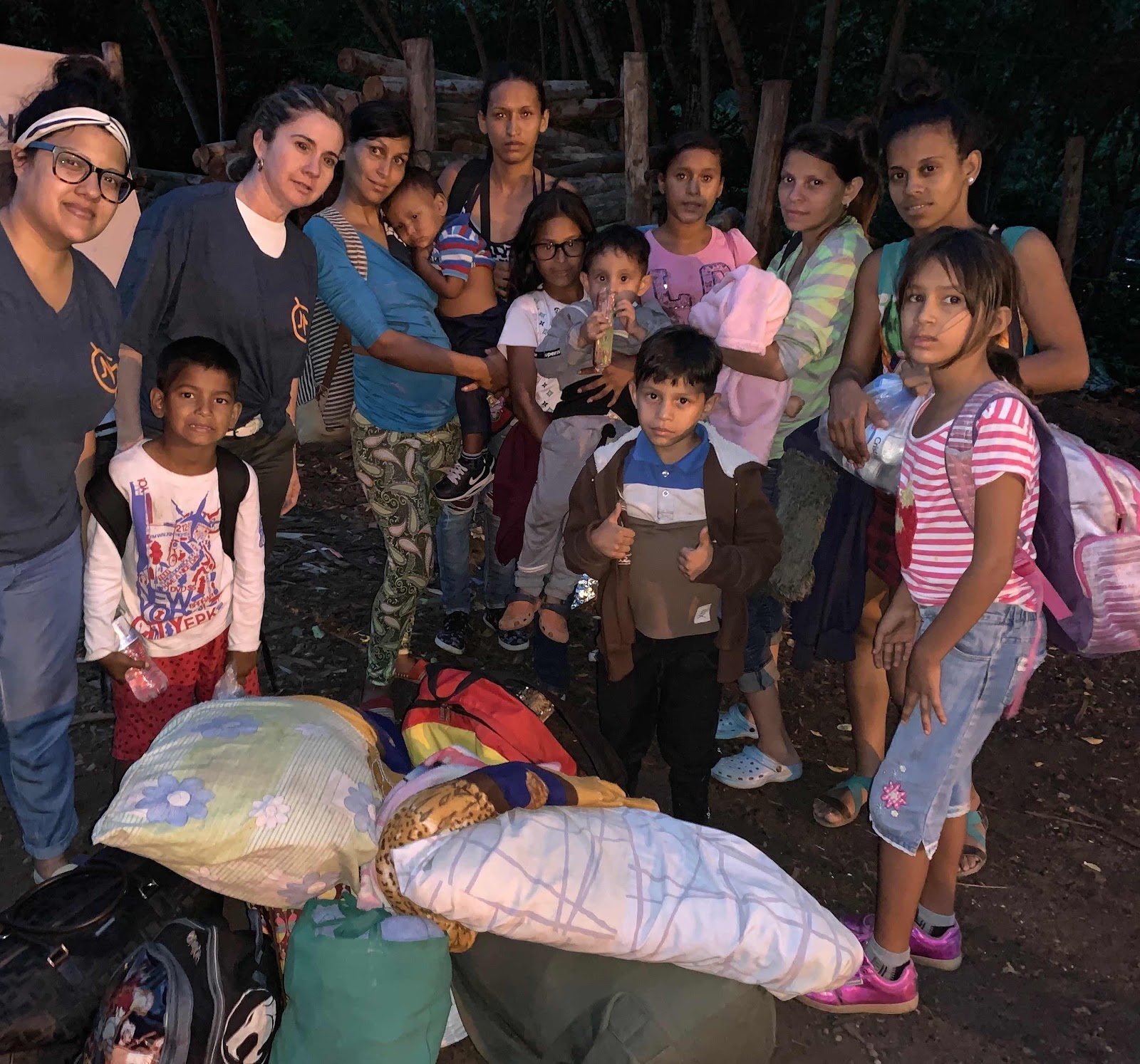
The crisis in Venezuela has left its citizens without proper healthcare, with gross inflation leading to virtually worthless currency and lack of consistency in the education system as well as violence and economic instability. This crisis is not new--it has been ongoing for years but tensions have been rising recently which have led to a mass exodus out of Venezuela. Neighboring Colombia has been bearing the brunt of this migration, doing its best to accept everyone they can. At the legal border crossings (one of which is seen above) there are several conditions for which migrants can enter : they must have proper documentation, they must have a pre existing medical appointment or a temporary work permit or children who are now in school in Colombia may be accompanied by their parents. The vast majority of those crossing are doing so at unsafe and unsanctioned sites on the border which is what you see in the picture below.

This process is dangerous and yet thousands cross daily, women with small children and I mean even neonates !! They are carrying as much as they can and they are braving the gang activitiy which exists primarily to benefit from those crossing (charging a tarriff). Colombian police are stationed everywhere doing what they can to prevent extortion of those crossing but it is an overwhelming sight to behold. Many are crossing through Colombia with plans to WALK to neighboring countries because they cannot afford to pay for a bus ticket. Along the way are humanitarian aid in the form of shelter, food, vaccines/healthcare (which are NOT available in Venezuela thereby increasing the prevalence of preventable diseases ie Measles). The first refuge spot after the border is approx 20 plus miles away. We crossed many "caminantes", the walkers, making their way to Ecuador or Peru or Chile, a trek that could take over a month.

Along the way we happened across a group of women and children. Three mothers to be exact, one pregnant of 5 months and holding her 2 year old son, another carrying a newborn and another minding the other very small children. We had to stop and help further them along to the next refuge down the road, the sky was turning dark and it was about to start pouring rain. We dropped them at a shelter where at least another hundred migrants were taking shelter for the night. In the morning they would all set out , again on foot, to the next shelter along the route to their destination country. (Consent obtained for the photo below)
 Back in Cucuta we had a very productive trip, visiting the main public hospital that attends to the majority of the Venezuelan migrants as well as the vulnerable Colombian population as well. However due to the complexity of the health care system it's quite difficult to obtain follow up care let alone the service of sub Specialist Consultants. There is a large majority of Venezuelan women who go through an entire pregnancy without any pre natal care! Our mission was to assess the need for capacity building--it is clear that the emergency department at this hospital is overwhelmed, "collapsed" as they say here in Colombia. We identified all the right persons to help us implement a course in ultrasound which could potentially cut down the time needed to evaluate patients and help the turn over rate in the ER. We are also of course going to have volunteers here on the ground providing direct medical care in the highest areas of need, general medicine, pediatrics, and maternal care. BUT, all of that fell to the background after really witnessing what is happening at the border.
Back in Cucuta we had a very productive trip, visiting the main public hospital that attends to the majority of the Venezuelan migrants as well as the vulnerable Colombian population as well. However due to the complexity of the health care system it's quite difficult to obtain follow up care let alone the service of sub Specialist Consultants. There is a large majority of Venezuelan women who go through an entire pregnancy without any pre natal care! Our mission was to assess the need for capacity building--it is clear that the emergency department at this hospital is overwhelmed, "collapsed" as they say here in Colombia. We identified all the right persons to help us implement a course in ultrasound which could potentially cut down the time needed to evaluate patients and help the turn over rate in the ER. We are also of course going to have volunteers here on the ground providing direct medical care in the highest areas of need, general medicine, pediatrics, and maternal care. BUT, all of that fell to the background after really witnessing what is happening at the border.
I will leave you with this. At one point, while visiting the border crossing we heard rifles in the distance. We dove for cover, people were running and the police ran into the area of gunfire. Within minutes it had ceased and we soon learned we were far enough away to have remained safe. The altercation was initiated between to groups of traffickers fighting over territory. What struck me was how "normal" this seemed for all involved. Even those I witnessed crossing at the unsanctioned site--their faces were hardened, they didn't exhibit the same look of shock that I had on my face. I cannot believe we live in a world where this situation feels normal or usual for anyone.
My heart hurts for Venezuela but I truly am uplifted by the motivation of Colombia to help its neighbors. The effort on the ground is tremendous and I look forward to any opportunity to contribute to this humanitarian crisis.







